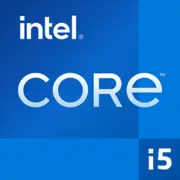Intel Core i5-4278U

Intel Core i5-4278U: 時代遅れの戦士か、それとも予算向けの選択肢か?2025年のプロセッサ解析
(この記事は2025年4月の情報に基づいています)
1. アーキテクチャとプロセス技術:Haswellの詳細
2014年に発売されたIntel Core i5-4278Uは、Haswellマイクロアーキテクチャに基づき、22nmプロセス技術で製造されています。これは、ウルトラブックや薄型ノートブックを対象としたCore i5の第4世代です。
- コアとスレッド:2つの物理コアとHyper-Threadingサポート(4つのスレッド)。基本周波数は2.6GHz、Turbo Boostの最大周波数は3.1GHzです。
- 統合グラフィックス:Intel Iris Graphics 5100は、このチップの重要な強みの一つです。40の実行ユニット(EU)と最大1.1GHzの周波数を持ち、標準的なIntel HDソリューションを上回る、ゲームにおいて30-50%のパフォーマンス向上を提供しました。
- キャッシュ:3MBのL3キャッシュを搭載しており、その当時のミドルレンジプロセッサとしては一般的です。
アーキテクチャの特徴:
Haswellは、ワットあたりのエネルギー効率とパフォーマンスを改善しました。しかし、2025年には22nmプロセス技術は、5nmのApple M3や4nmのAMD Ryzen 8000と比較すると時代遅れに見えます。
2. TDPとエネルギー消費:パワーとバッテリーライフのバランス
i5-4278UのTDP(熱設計電力)は28Wで、現在のウルトラブック用チップ(例:Intel Core Uシリーズは15W)よりも高めです。ただし、2014年当時これによりバランスを保つことができました:
- 熱発生:アクティブ冷却が必要でしたが、コンパクトなケース内で過熱することはありませんでした。
- エネルギー効率:Intel SpeedStep技術とCステートが、動的に周波数と電圧を調整し、アイドル時の消費電力を削減しました。
3. パフォーマンス:2025年のテスト
Geekbench 6による評価(919/1860)は、プロセッサが現代の予算向けチップ(例:Intel N100 — 1200/3500)にも劣ることを示しています。
- オフィス作業:
— 文書作成(Word、Excel)、ブラウザ(10以上のタブ) — 必要な作業は可能ですが、バックグラウンドアプリの起動時に遅延が発生する可能性があります。
— Windows 11は動作しますが最適ではありません:軽量OS(Linux Mint、ChromeOS Flex)への移行が推奨されます。
- マルチメディア:
— 4Kビデオの再生:ハードウェアアクセラレーション(Intel Quick Sync)を通じれば可能です。
— Lightroomでの写真編集:基本的な編集は可能ですが、バッチ処理は不可です。
- ゲーム:
— Iris 5100は、2010年代のゲームを低設定で処理できます:CS:GO(40-50 FPS)、Dota 2(30 FPS)、Skyrim(720p)。現代のプロジェクト(Cyberpunk 2077、Alan Wake 2)は起動しません。
- Turbo Boost:
このモードは一時的に周波数を3.1GHzに引き上げますが、マルチスレッドタスク(レンダリング、エンコード)では2コアに制限されます。
4. 利用シナリオ:2025年にi5-4278Uが向いているのは誰か?
- 学生:学習(タイピング、プレゼンテーション、Zoom)に適しています。
- オフィスワーカー:クラウドサービスやメールでの作業。
- Linuxユーザー:軽量ディストリビューション(Lubuntu、Xubuntu)が古いノートパソコンを復活させます。
- セカンドデバイス:旅行用やバックアップPCとして。
向かない:
- ゲーマー、動画編集者、重いソフトウェア(Photoshop、Blender)を使用するユーザーには不向きです。
5. バッテリーライフ:どれくらい持つのか?
2014-2016年にi5-4278Uを搭載したノートパソコンは、40-50Whのバッテリーを装備していました。2025年には(バッテリーの劣化を考慮して)以下が予想されます:
- ウェブサーフィンで4-5時間(輝度50%)。
- 負荷時で2-3時間(YouTube、オフィス作業)。
省エネ技術:
- Panel Self-Refresh:画面のエネルギー消費を削減します。
- Aggressive Link Power Management:Wi-Fiや周辺機器の動作を最適化します。
アドバイス:HDDをSSDに交換し、8GB以上のRAMを導入するとデバイスの寿命が延びます。
6. 競合との比較
- AMD A10-7300(2014):プロセッサとしては弱いが、グラフィックスはより優れている(Radeon R6)。シングルスレッドタスクでは劣ります。
- Intel Core i5-8250U(2017):4コア、15W TDP、+70%のパフォーマンス向上。
- Apple MacBook Air(M1、2020):3-5倍のスピード、2倍のバッテリー寿命。
結論:2025年にi5-4278Uは、予算向けソリューションとしてのみ適用可能($300以下)。
7. 長所と短所
強み:
- 手頃な価格(ノートパソコンは$250から)。
- 当時の良好なグラフィックス。
- 大多数のOSと互換性あり。
弱点:
- コアが2つのみ。
- 現代のチップと比べて高いエネルギー消費。
- AVX2をサポートせず、命令セットが限られている。
8. ノートパソコン選びのアドバイス
2025年にi5-4278Uを搭載したデバイスを購入する場合:
- デバイスタイプ:2014-2016年のウルトラブック(例:Dell XPS 13、MacBook Pro Retina 13)。
- アップグレード:
— 必須:SSD(256GB以上)、8GB以上のRAM。
— オプション:バッテリー交換(純正は$50-80)。
- 画面:Full HD(1920×1080)を探しましょう—HD(1366×768)は時代遅れです。
- 確認:ノートパソコンが新品であることを確認してください(中古品ではないこと)。2025年にはこのようなモデルは稀ですが、一部の小売業者は古い在庫を売っています。
代替案:$400-600でIntel Core i3-1215UやAMD Ryzen 3 7320Uを搭載したノートパソコンを見つけることができ、これらは2-3倍のスピードが得られます。
9. 最終判断:買うべきか?
2025年のIntel Core i5-4278Uは、次のようなユーザーに向いています:
- 基本的なタスクができれば満足な節約家。
- 古いデバイスを改造したい愛好者。
- 互換性を重視するLinuxファン。
主要な利点:
- 超低価格。
- 新しいデバイスがあれば信頼性。
- 需要の少ないシナリオに対する汎用性。
主なアドバイス:予算が$500以上可能であれば、現代のノートパソコンに投資してください—パフォーマンスと快適さには大きな違いがあります。
基本
CPUの仕様
メモリ仕様
GPUの仕様
その他
ベンチマーク
他のCPUとの比較
ソーシャルメディアで共有する
または当サイトへのリンクを追加
<a href="https://cputronic.com/ja/cpu/intel-core-i5-4278u" target="_blank">Intel Core i5-4278U</a>